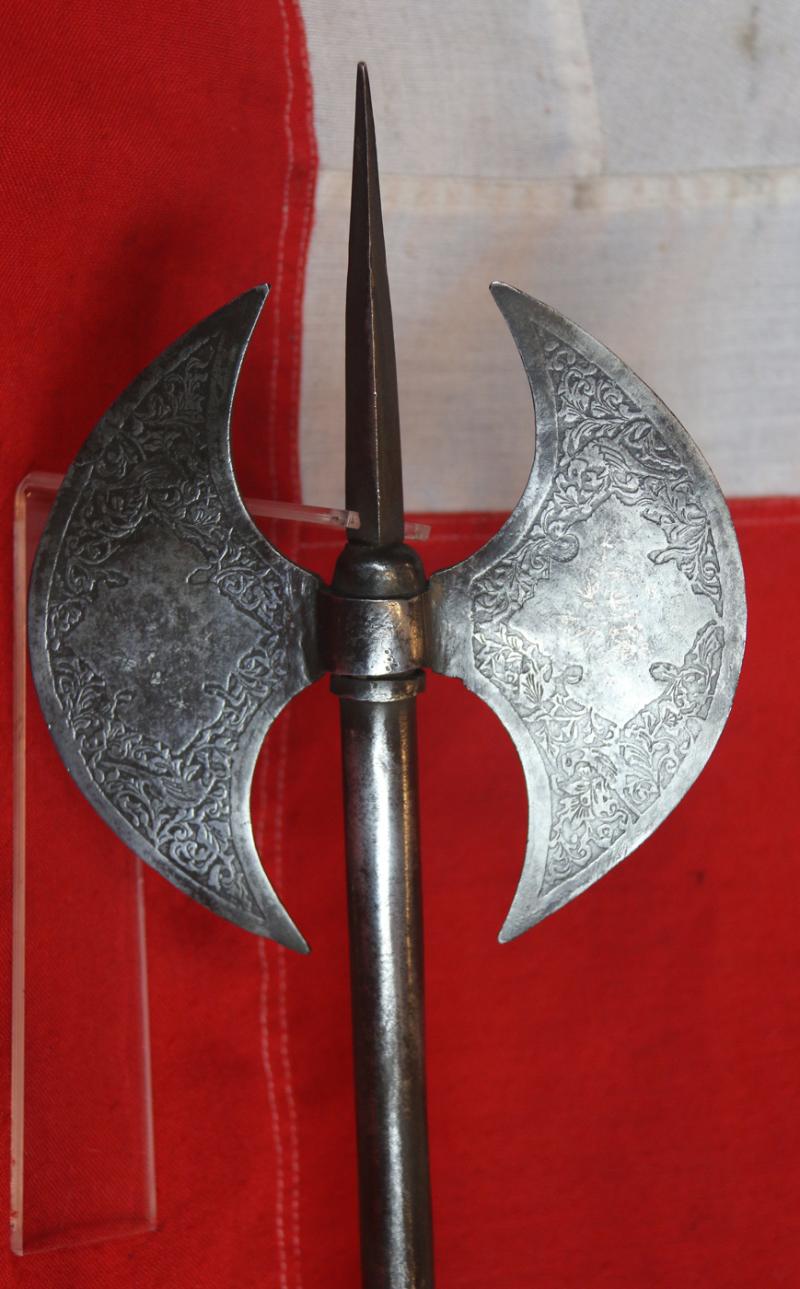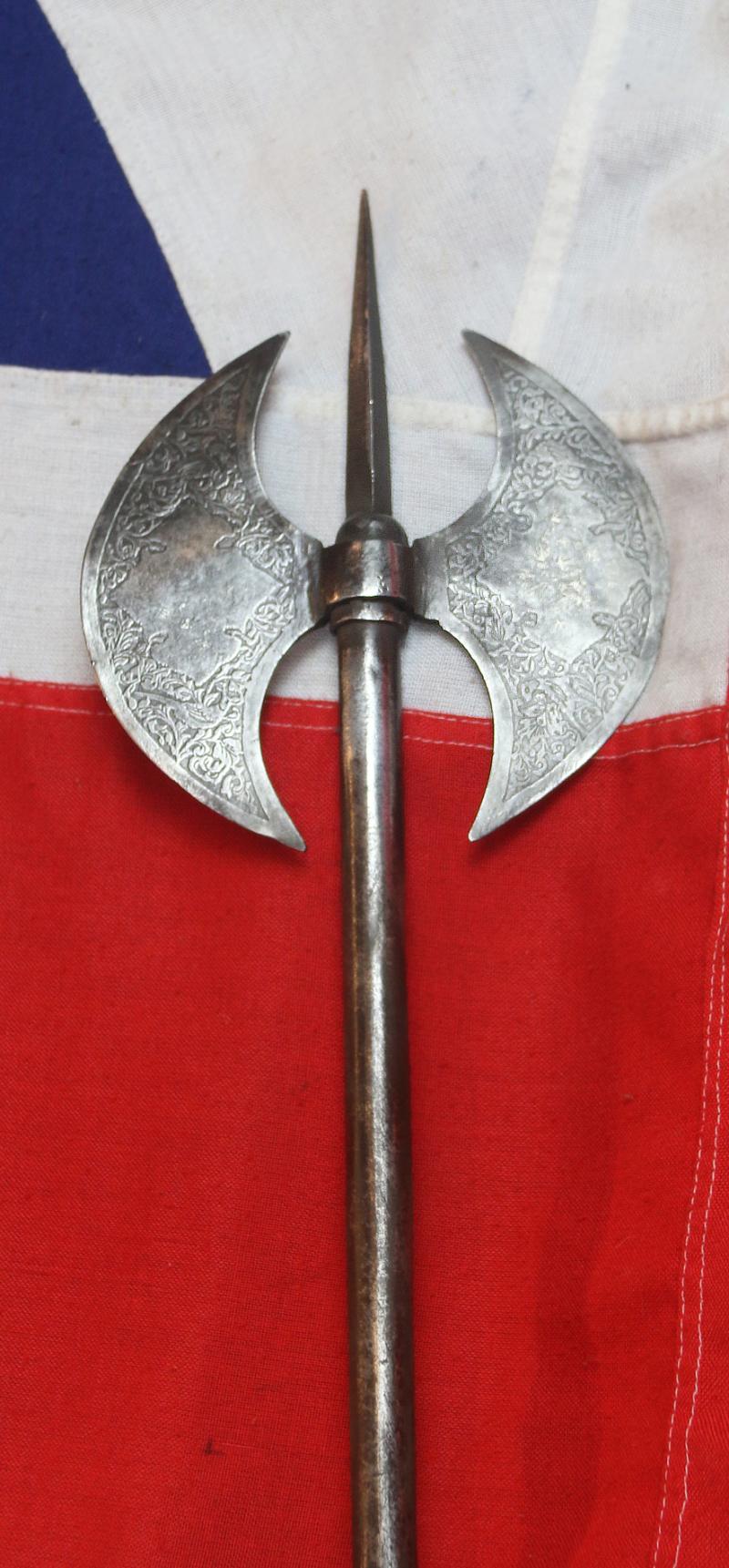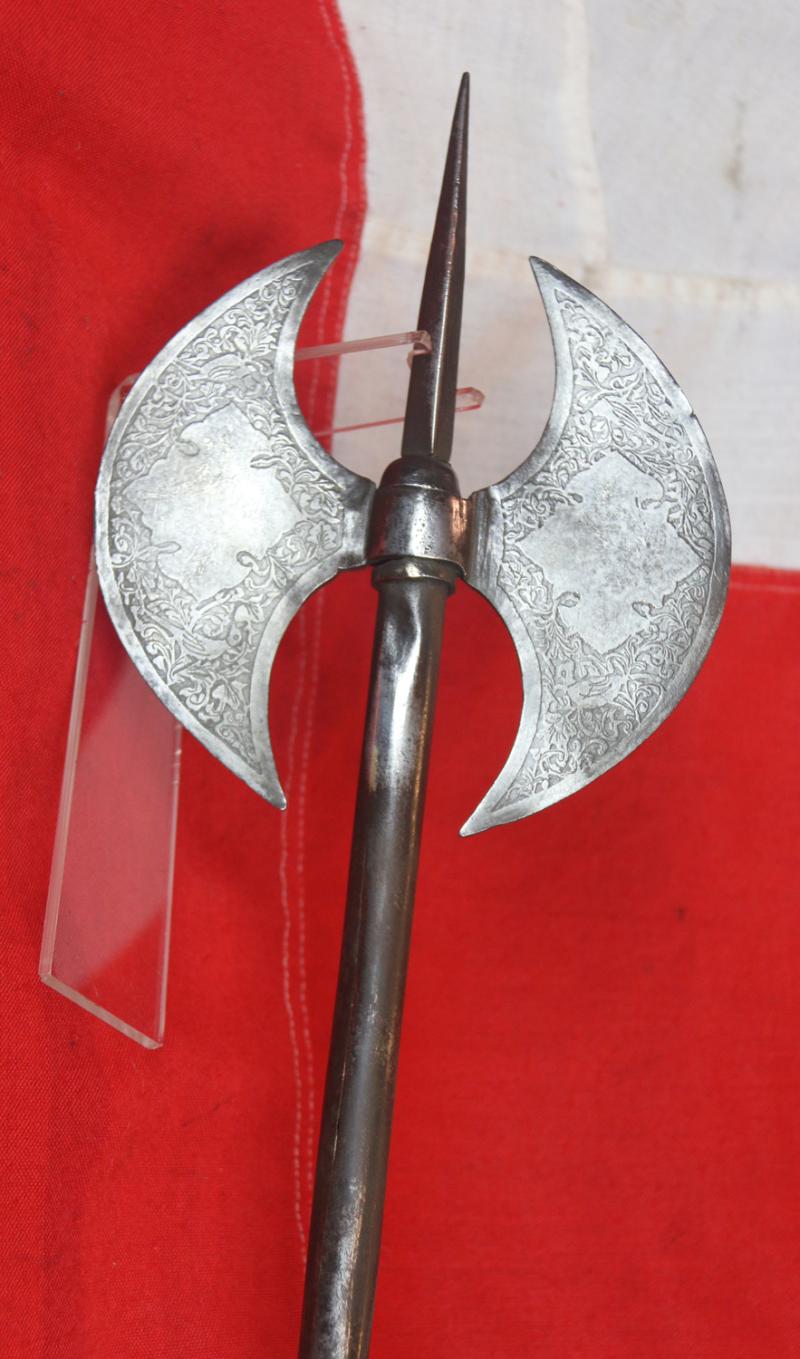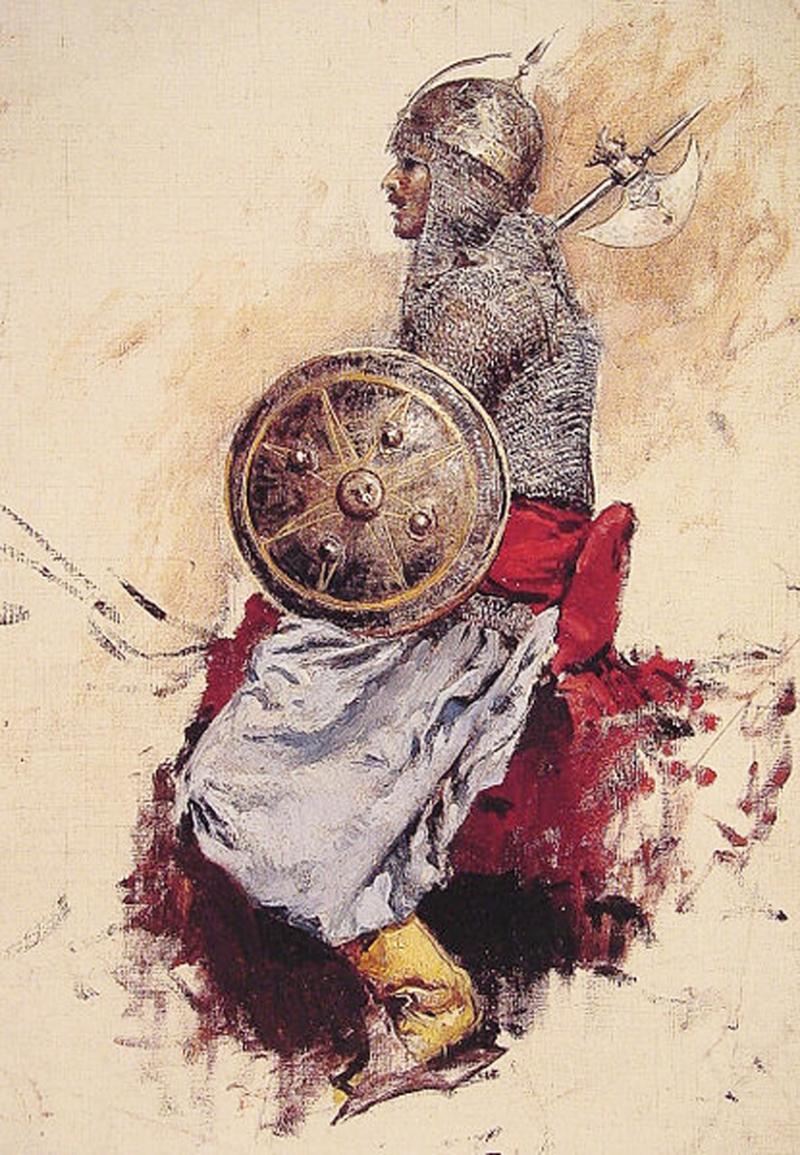A 18th to Mid 19th Century Steel, Indo Persian, Double Crescent Blade Headed War Axe and Spike, Known as a Tabarzin
Of a type carried into battle by Indo-Persian/Mughal warriors. With engraved bird and floral decoration to the axe heads. Iron shaft.
The double head war axe with spike would have been a very effective battlefield weapon and had excellent balance.
The term tabar is used for axes originating from the Ottoman Empire, Persia, Armenia, India and surrounding countries and cultures. As a loanword taken through Iranian Scythian, the word tabar is also used in most Slavic languages as the word for axe.
The tabarzin (saddle axe) (Persian: تبرزین; sometimes translated "saddle-hatchet") is the traditional battle axe of Persia. It bears one or two crescent-shaped blades. The long form of the tabar was about seven feet long, while a shorter version was about three feet long or less. What makes the Persian axe unique is the very thin handle, which is very light and always metallic. The tabarzin was sometimes carried as a symbolic weapon by wandering dervishes (Muslim ascetic worshippers). The word tabar for axe was directly borrowed into Armenian as tapar (Armenian: տապար) from Middle Persian tabar, as well as into Proto-Slavonic as "topor" (*toporъ), the latter word known to be taken through Scythian, and is still the common Slavic word for axe.
A delightful example of a ceremonial axe in war axe form
Code: 25036
495.00 GBP






